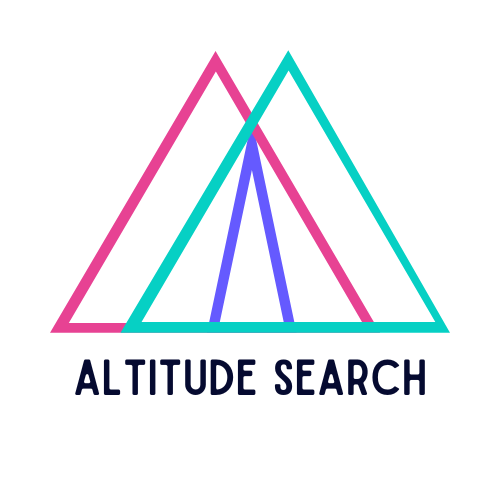
Technical SEO for Bilingual Sites: Te Reo Integration Best Practices
Estimated reading time: 10 minutes.
te reo Māori (often referred to as just ‘te reo’) is one of New Zealand’s three official languages and stands at the heart of the country’s cultural identity. Although English remains the primary means of communication for most Kiwis, there has been a steady resurgence of te reo in recent years—driven by educational initiatives, government support, and a widespread public desire to honour the Treaty of Waitangi.
Recent statistics show that around 4% of the total population (nearly 190,000 people) can carry on an everyday conversation in te reo Māori, with tens of thousands speaking it “well or very well.” The language also appears in everyday life, from bilingual place names and signage to common greetings like “kia ora,” “mā te wā,” and “ngā mihi.” Many younger New Zealanders (both Māori and non-Māori) are increasingly embracing te reo, with about 7% of primary and secondary students receiving full or partial Māori-medium education. This renewed interest extends into businesses, government agencies, media, and entertainment—showcasing the language’s growing prominence.
Integrating te reo Māori into your website and brand communications requires thoughtful consideration and technical care. By accurately including te reo—through correct use of macrons (tohutō), appropriate HTML language tags (lang attributes), and clear indications of bilingual content (hreflang)—you can provide a culturally respectful and accessible user experience. This approach ensures your content reaches the right audiences, helps search engines correctly understand and index your pages, and authentically supports the ongoing revitalisation of te reo.
Key Takeaways:
- Accurate macron use shows cultural respect, preserves meaning, and ensures search engines index Māori words correctly.
- Specifying lang in your HTML improves accessibility, clarifies language to search engines, and enhances user experience.
- Hreflang ensures each version of your site reaches the right audience, preventing duplicate content and confusion in search results.
Table of Contents:
Mastering Macrons
A macron is a simple horizontal line (¯) placed above a vowel, indicating that the vowel sound should be held longer than usual. When creating bilingual English–Māori content, using macrons (tohutō) is essential for correctly spelling and pronouncing Māori words.
This is particularly important for words that look similar, but have different meanings with/without macrons. For example, “wētā” refers to a giant native cricket, while “weta” (without the macron) means filth or excrement—a crucial distinction.
Accurate use of macrons also matters from an SEO perspective, as search engines can treat vowels with macrons as different characters. Missing or poorly applied macrons could be misinterpreted as bad spelling or broken code, potentially influencing your site's indexing and search visibility. Consistency in using macrons is therefore important for both user experience and search optimisation.
Macrons on Your Website
From a technical perspective, you’ll want to ensure your code can correctly display macrons. Modern websites typically handle UTF-8 (Unicode) without issue, for example, this Shopify website processes macrons with no additional coding.
If you run into problems typing or displaying macronised characters, you can use HTML character codes or decimal/hex references. These short bits of HTML are used to display characters that have special meaning in HTML as well as characters that don't appear on your keyboard. Using the correct character ensures search engines and browsers can properly process and display your Māori words.

W3Schools is a free learning resource that provides a full list of characters, examples and a space to test your HTML character codes. Find them here: UTF-8 Latin Extended A.
Declaring Your Language
When creating bilingual or multilingual websites, using two (or more) languages and their special characters is just the first step. Next, we need to ensure that we are clearly providing information on the language used on the page. By declaring the language, we tell search engines, browsers and assistive technologies how to interpret the text on the page, improving accessibility for users and performance in organic search.
Language is specified by using lang attributes.
Setting the Default Language
You should always declare a default language for your page. This is typically done in the <html> tag:

This lang="en" tells browsers (and search engines) that the main language of the page is English. If your primary language is Māori, you would use lang="mi".
Standards for Language Tags
BCP 47 (Best Current Practice) defines language tags to clearly specify language variations, typically using ISO standards. It incorporates standard two-letter language codes (ISO 639-1) like "mi" for Māori.
Language tags can also combine language codes with region codes, as in "en-NZ" for New Zealand English, where "en" stands for English and "NZ" for New Zealand. However, in most cases, using simple tags such as "en" for English or "mi" for Māori is sufficient.
Therefore, when specifying languages, you might see:
- "mi" for Māori (ISO 639-1 standard)
- "en-NZ" for New Zealand English, combining "en" (English) with "NZ" (ISO country code).
You may also encounter "mri" (ISO 639-3) for Māori, but "mi" is perfectly valid and typically preferred for clarity and simplicity.
Handling Multiple Languages in One Page
If you have small sections of text in another language—say, a Whakataukī (Māori proverb) within an English page—wrap that section with an element and use a second lang attribute:

Why is this important? Firstly, accessibility. It ensures your content is easily understood by all users, including those using assistive technologies like screen readers. Proper markup helps these tools interpret and present your content correctly. Additionally, if your content isn't clearly structured, search engines may struggle to understand its context, potentially impacting your rankings and visibility.
Managing Multilingual Sites
If your website approach has fully embraced using two (or more) languages and, for example, has created separate English and Māori versions of the same page, you will need to consider implementing additional ways to inform your users and search engines that different language variations are available.
This may include;
- Using subdirectories (or folders) in your website architecture to separate your English versions from your Māori versions.
- Planning your internal contextual and navigational links to keep users and crawlers on the same language version content on your site.
- Adding a language switcher or prompt to allow users to see the most appropriate version for their settings or region.
- Adding hreflang attributes to help search engines understand when certain pages are alternate or translated versions of the same content.
Introducing hreflang attributes
Hreflang specifies the language and optional regional targeting of a webpage. If you offer a fully translated Māori version of a page, as well as an English version, hreflang can help search engines understand that both URLs share the same core content but are intended for different language audiences.
This attribute signals to search engines:
- Which language a particular page targets (e.g., "en" for English, "mi" for Māori).
- Which region the page is for (e.g., "NZ" for New Zealand).
Unlike the HTML lang attribute, which indicates the language used on a page, hreflang tells search engines which URL to display in search results based on a user’s language and regional settings. This not only helps avoid duplicate content issues but also ensures users see the most relevant version of your content.
Common scenarios covered by hreflang:
- Content targeting the same country, in different languages
- Content targeting different countries, in different languages
- Content targeting different countries, in the same language
How to implement hreflang
There are three ways to set up hreflang. All three methods achieve the same goal (telling search engines about language/region versions of a page). Deciding which method to use mostly comes down to which approach is simplest for you or your team to implement and maintain. Whichever you choose, the principle remains the same: each language version references all other versions (including itself).
1. HTML <link> Tags in the <head> Section
You place a <link> tag inside the <head> section of each webpage.

Pros:
- Visibility & Simplicity: Anyone looking at your page’s source code can see the hreflang tags right there. It’s straightforward to understand and maintain if your site isn’t huge.
- Commonly Used: Most guides and tutorials show this method first, so there’s plenty of help available if you get stuck. Also, most CMS plugins use this method.
Cons:
- Hard to Manage for Large Sites: If you have many pages in multiple languages, you have to add or update these tags on each page. That can be time-consuming and prone to mistakes.
- Code Clutter: The <head> section can become crowded if you have several languages/regions, making the page code longer and more complex.
2. HTTP Headers
Instead of placing the links in the page’s HTML, you send hreflang headers from the server when someone requests the page.

Pros:
- No Need to Edit Page HTML: If you can’t easily change your site’s code (like if you’re using certain CMS setups or file types), you can set hreflang at the server level.
- Works for Non-HTML Files: If you have PDFs or other file types, you can still serve hreflang information through the server header, which is handy if you want search engines to understand language targeting for those files.
Cons:
- Requires Server Knowledge: You (or your developer) must configure the server to send these headers. It can be more technical to set up.
- Less Visible: It’s harder to spot errors since the instructions live in the server configuration, not the page’s HTML. You often need special tools to verify if everything’s working.
3. XML Sitemaps
You include extra tags in your XML sitemap. For each page, you list its different language or regional versions.

Pros:
- Centralised Management: Instead of editing each page, you handle hreflang in a single file (the sitemap). This can be much simpler for large sites.
- Clear for Search Engines: Search engines often look at sitemaps first. As long as your sitemap is correct, you’re giving them an easy roadmap to follow.
Cons:
- Sitemap Must Be Well-Maintained: If you forget to update your sitemap or it gets out of sync with your actual pages, it can confuse search engines.
- Requires Proper Setup: You need to ensure the sitemap is formatted correctly (XML with the right tags).
Embracing te reo Māori in Your Digital Strategy
Bringing te reo into your digital strategy is a meaningful way to recognise Aotearoa’s bicultural heritage and create a more inclusive user experience. From accurately using macrons to correctly implementing lang and hreflang attributes, these technical steps can help search engines, browsers, and users alike to understand and appreciate your bilingual content.
While this article has highlighted best practices in SEO and web optimisation, it is always advisable to seek guidance from fluent speakers or cultural advisors when incorporating te reo. Doing so not only ensures linguistic accuracy but also respects the language’s deep cultural importance. With the right blend of technical know-how and cultural awareness, you can celebrate te reo Māori online while enhancing visibility and engagement for your New Zealand audience.

